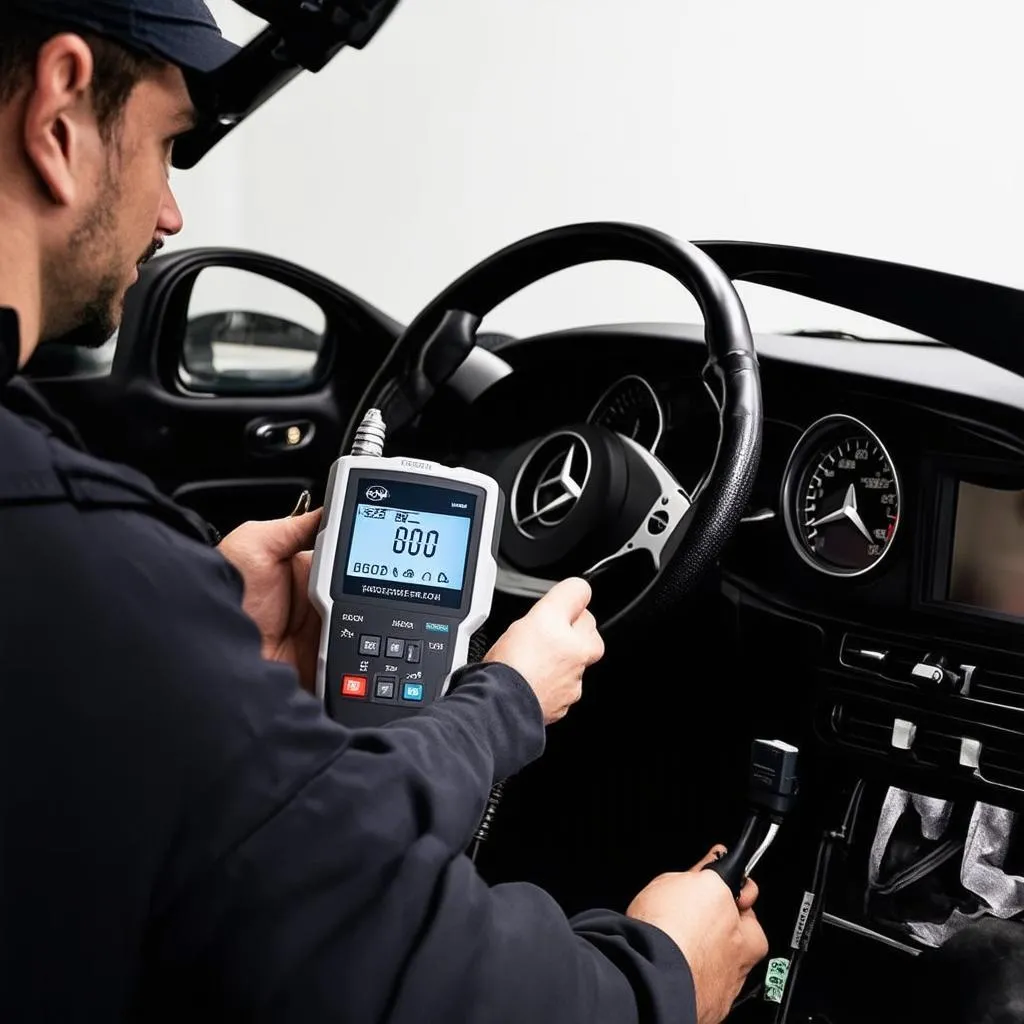Discovering a cracked rim on your Mercedes can be disheartening. It impacts your car’s performance and poses safety risks. While it might seem like a significant problem, understanding the issue and available solutions can make the situation less daunting. This guide delves into the intricacies of fixing a cracked Mercedes rim, offering clear and actionable information to guide you.
Understanding the Problem of a Cracked Mercedes Rim
A cracked Mercedes rim can occur due to various reasons, the most common being impact with potholes, curbs, or other road hazards. These impacts can cause stress fractures on the rim, leading to cracks. Over time, these cracks can worsen, leading to air leaks, vibrations, and even complete rim failure.
cracked-mercedes-rim|Cracked Mercedes Rim|Close-up photo of a cracked Mercedes-Benz alloy wheel, showcasing the damage caused by impact with a pothole.
Recognizing the Signs of a Cracked Rim
Identifying a cracked rim early is crucial to prevent further damage and potential accidents. Here are some telltale signs:
- Visible cracks or bends on the rim: A visual inspection can often reveal the issue.
- Loss of tire pressure: A cracked rim can lead to slow or rapid air leaks.
- Vibration in the steering wheel: This is especially noticeable at higher speeds.
- Unusual noises from the tire: You might hear a thumping or clicking sound.
car-repair-tools|Car Repair Tools for Fixing Cracked Rim|Flat lay photo of tools needed to repair a cracked car rim, including a car jack, jack stands, lug wrench, tire iron, sandpaper, epoxy, and tire sealant.
Gathering the Necessary Tools for Repair
Before beginning the repair, gather the following:
- Car jack and jack stands: To lift and secure the vehicle safely.
- Lug wrench: To remove the lug nuts holding the wheel.
- Tire iron: To remove the tire from the rim.
- Sandpaper (various grits): To smooth the cracked area.
- Epoxy or metal filler: To fill and seal the crack.
- Tire sealant (optional): To provide an extra layer of protection against leaks.


